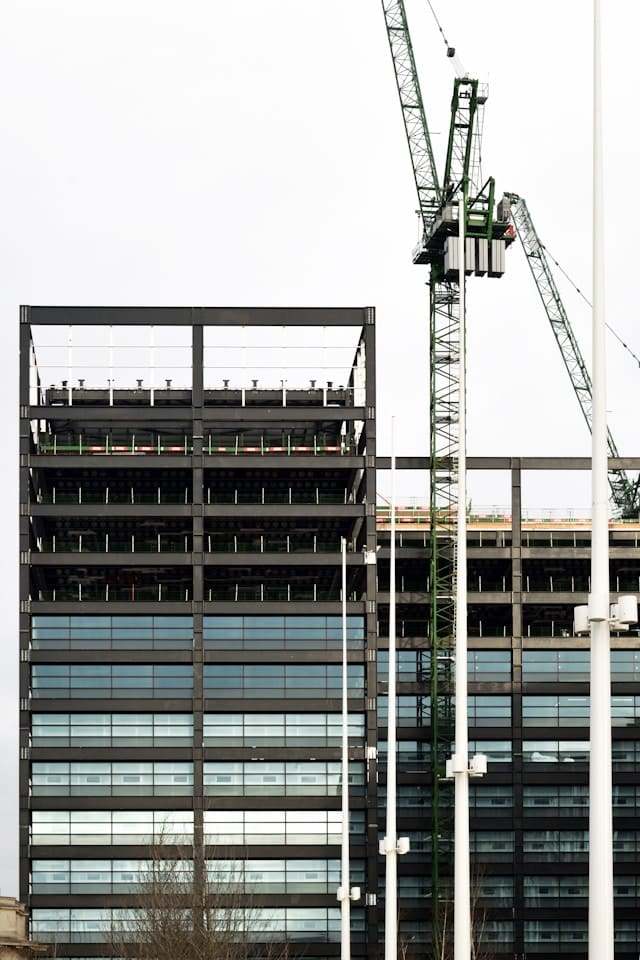Changing the urban microclimates is one of the pressing issues of the 21st century. It can be possible with the intelligent use of green infrastructure. It involves the use of the elements of nature in the urban development projects to make cities more sustainable and resilient. In this context, the role of green infrastructure in altering the increasingly challenging urban microclimates is becoming a pressing issue. This article will provide a detailed review of how green infrastructures can help alter urban microclimates, particularly in the context of the UK.
Urban Microclimates: An Overview
What is an urban microclimate and why is it significant?
Dans le meme genre : What’s the Latest in Non-Dairy Milk Alternatives for UK’s Lactose-Intolerant Population?
An urban microclimate is a localized atmospheric zone where the climate differs from the surrounding areas. This difference is not just in terms of temperature, but it also includes aspects like air quality, wind speed, and humidity. The disparity in these conditions is often due to human activities and urban infrastructure, including buildings, roads, and other built structures.
The urban microclimate can significantly impact the climate and air quality of a city. With rapid urbanization, cities often suffer from increased temperatures, known as the urban heat island (UHI) effect. This phenomenon increases energy consumption, raises cooling costs, and exacerbates heat-related illnesses. Also, it contributes to climate change by increasing the release of greenhouse gases.
Lire également : What Are the Best Practices for Teaching Cybersecurity in UK Higher Education?
The Role of Green Infrastructure
Green infrastructure is a key player in addressing urban microclimate issues.
Green infrastructure is a planned network of natural and semi-natural areas designed and managed to deliver a wide range of ecosystem services. It incorporates features like green roofs, parks, trees, and green walls, among other elements.
One of the primary benefits of green infrastructure is its ability to absorb and store heat, thereby reducing the temperature of urban areas. A study conducted by scholars from the Royal Academy of Engineering in the UK found that green infrastructure could reduce the temperature in urban areas by up to 2-8°C.
Moreover, trees and plants, fundamental components of green infrastructure, can filter pollutants from the air, improving air quality and creating healthier urban environments.
Changing Microclimates with Green Roofs
Green roofs are a practical solution to changing the urban microclimates.
Green roofs are roofs covered with vegetation and a growing medium, installed over a waterproof membrane. They have gained popularity across the globe due to their potential benefits, including energy efficiency, stormwater management, and improved air quality.
Green roofs can significantly alter the urban microclimates. A study published on Google Scholar found that green roofs could reduce the air temperature by up to 2°C during hot summer days. This is because green roofs absorb less heat than traditional roofs and also release it more slowly.
In a review of green roofs in the UK, Crossref found that green roofs could reduce the need for air conditioning in buildings, thereby cutting energy use and reducing greenhouse gas emissions.
The Role of Blue Infrastructure
Besides green infrastructure, blue infrastructure also plays a vital role.
Blue infrastructure refers to urban design features that use water to improve the environment and quality of life in towns and cities. It includes elements like ponds, rain gardens, bioswales, and constructed wetlands.
Like green infrastructure, blue infrastructure can also help mitigate the impacts of urban microclimates. For instance, the presence of water bodies can help cool the air, reducing the urban heat island effect. Furthermore, they can help improve air quality by trapping dust and other pollutants.
Green Infrastructure and Climate Change
Green infrastructure is a vital tool in mitigating the impacts of climate change.
With the increasing impacts of climate change, incorporating green infrastructure in urban planning and development is becoming more critical than ever. It can assist in adapting to and mitigating climate change by sequestering carbon, reducing energy use, and enhancing resilience to climate-induced impacts such as floods and heatwaves.
In the context of the UK, the government’s National Adaptation Programme recognizes the importance of green and blue infrastructure in adapting to climate change. It emphasizes the role of natural environments in absorbing CO2, supporting wildlife, and providing recreational spaces, in addition to mitigating the impacts of urban microclimates.
The alteration of urban microclimates with green infrastructure is a complex task that requires careful planning, implementation, and management. However, with the right strategies and tools, it is possible to create healthier and more resilient urban environments. This not only improves the quality of life for urban dwellers but also contributes to the broader goal of mitigating climate change.
Enhancing Green Spaces for Improved Urban Planning
Increasing urban green spaces can significantly impact the microclimate.
Green spaces represent another crucial aspect of green infrastructure, playing a pivotal role in altering urban microclimates. According to a study published on Google Scholar, increasing green spaces in urban areas can help reduce the urban heat island effect and improve air quality.
Green spaces, such as parks and gardens, offer numerous benefits. Firstly, they provide shade, which lowers surface temperatures and contributes to thermal comfort in urban areas. They also help lessen air temperatures by releasing moisture into the atmosphere through evapotranspiration, a process wherein plants absorb water and release it as vapour.
Furthermore, green spaces can help reduce air pollution. Research from Scholar Crossref suggests that trees and plants can absorb and filter harmful pollutants from the air, thereby improving air quality. This can be particularly beneficial in crowded, traffic-congested cities where air pollution levels tend to be high.
Green spaces also contribute to urban planning by creating recreational areas for residents, enhancing cities’ aesthetic appeal and providing habitats for various species, thereby promoting biodiversity.
For these reasons, urban planners in the UK are increasingly incorporating green spaces into their city designs. By doing so, they contribute to creating healthier, more sustainable cities while also mitigating the effects of climate change.
Conclusion
Urban microclimates and green infrastructure are intertwined phenomena.
Through the incorporation of green infrastructures such as green roofs, blue-green spaces, and other natural elements into city designs, urban planners can significantly alter urban microclimates. This is not only crucial for improving the quality of life of urban dwellers by enhancing air quality and thermal comfort, but it also plays a pivotal role in mitigating the adverse effects of climate change.
The research from respected sources like Google Scholar and Scholar Crossref clearly illustrates the positive impacts green infrastructure can have on urban environments. From reducing the urban heat island effect to improving air quality, the benefits are multifaceted and far-reaching.
It’s clear that the task of altering urban microclimates through green infrastructure is a complex one, requiring careful planning, implementation, and management. However, with the right strategies and tools, it’s entirely feasible. The UK’s National Adaptation Programme’s recognition of the importance of green and blue infrastructure is a positive step in this direction.
In conclusion, as we move further into the 21st century, the pressing need to address climate change and its impacts becomes ever more apparent. Altering urban microclimates with green infrastructure represents a tangible and effective way to contribute to this global effort. As the old adage goes, “think globally, act locally”; by implementing green infrastructure at the city level, we can make a significant contribution to the fight against climate change.











